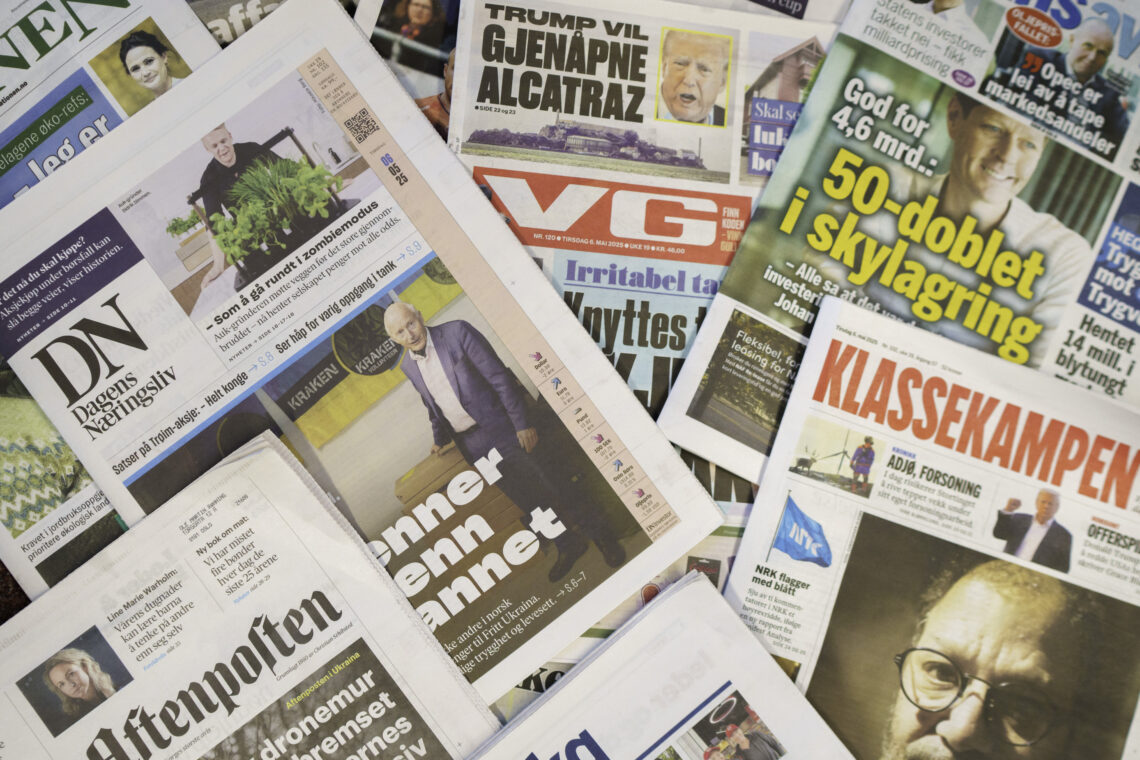“If the truth is the first casualty of war, our preparedness should start with strong newsrooms,” write editors-in-chief Olav T. Sandnes (TV 2), Gard Steiro (VG) and Guro Valland (Bergensavisen) in VG.
Perhaps the most accurate thing about this sentence is the irony that it comes from a group that has long thrived on framing the public sphere with an increasingly narrow range of opinions, while at the same time portraying itself as the last line of defence for freedom of expression.
Let’s take a closer look at what they’re actually saying – and translate it from newspeak to plain Norwegian.
Disinformation = unwanted opinions
“Disinformation” today is not primarily used to refer to incorrect information, but to opinions and judgements that break with the narrative of the established media. If you object to the green shift, the WHO, mass immigration or trans ideology, you risk being labelled a disinformant. This is not about truth, but about who gets to own it.
Polarisation = criticism from below
The threesome also complain about “increased polarisation”. This too has become a coded expression: What it really means is that more and more people are questioning the political direction the country is taking. Instead of listening, editors choose to portray criticism as a threat. It’s an effective way of labelling dissatisfaction as morally suspect.
Editor-controlled media = monopoly of opinion
A common theme is the complaint that “editor-controlled media” no longer sets the terms alone. People have gained direct access to the public via Substack, podcasts, YouTube and social media. Old power centres don’t like that. Because their real fear is not about disinformation. It’s about the loss of power.
Small drips of self-criticism
In order to appear credible, they let in a little self-criticism: Yes, the media has been less than transparent, less than relevant to young people, and sometimes arrogant. But in the next moment, the conclusion is clear: That’s why we need more support. More money. More definitional power.
This variant of self-criticism is like a marketer saying: “We’ve let you down as a customer, which is why we need a bigger budget and less competition.”
Who is defending democracy against the defenders?
“The editor-controlled media are part of society’s line of defence,” they say. Then it’s worth asking: Where was this line when all journalistic criticism of pandemic management was demonised? Where were they when “climate science” was equated with moral imperative? Where was it when Facebook, Google and X were pressurised to censor users at the behest of Western governments?
It’s clear that today’s media elite are more comfortable guarding the truth from above than scrutinising power on behalf of most people.
Conclusion
The editors’ text is not a defence of democracy, but an exhortation from the old clergy that their position and power of definition must be protected at all costs.
The truth is not the first casualty in war. Today, the truth is the first casualty in a war over the understanding of reality. And that war is not between free and unfree societies, but between the experiences of the people and the propaganda of the elite.
It’s that distance that creates polarisation. Not podcasts, X or alternative media.
An honest editorial team would know that.

